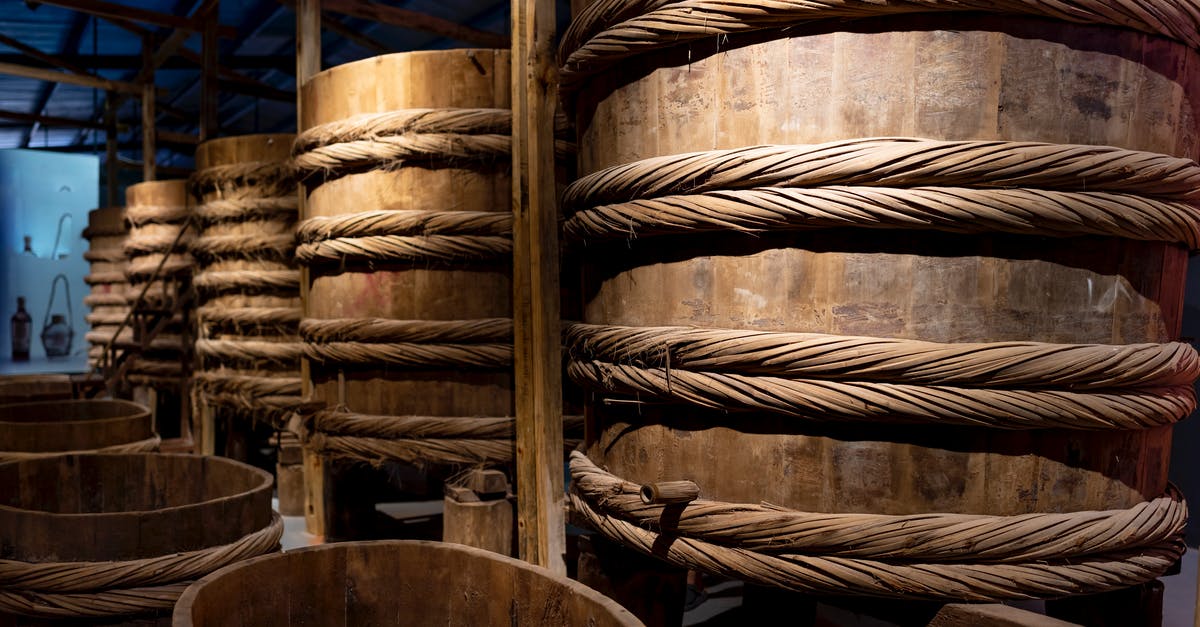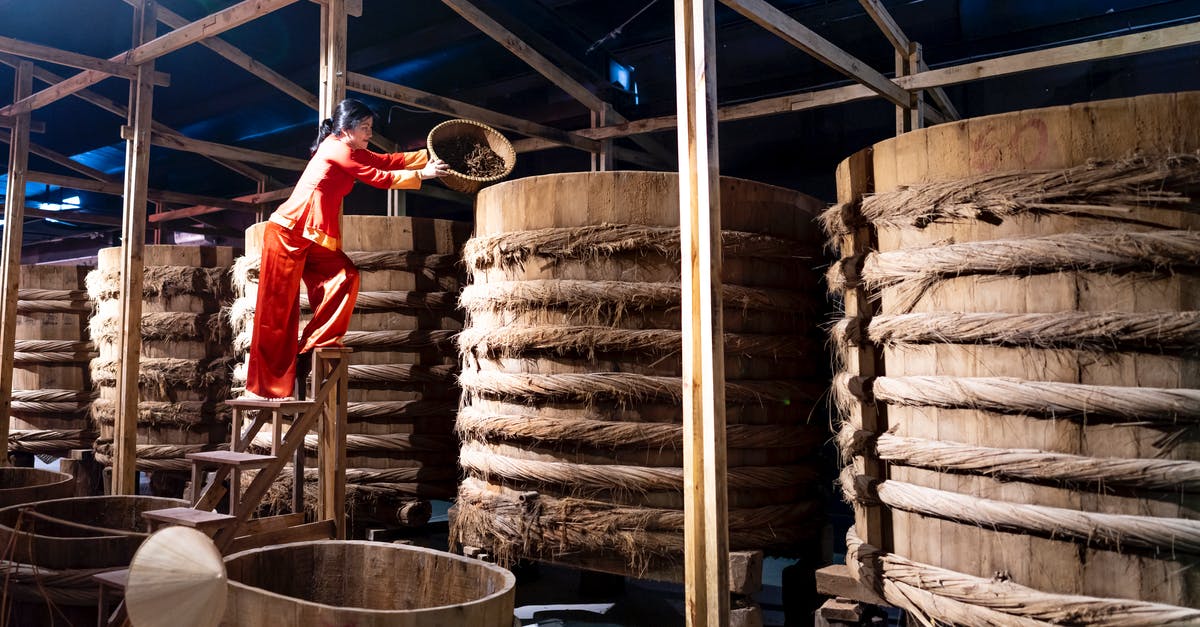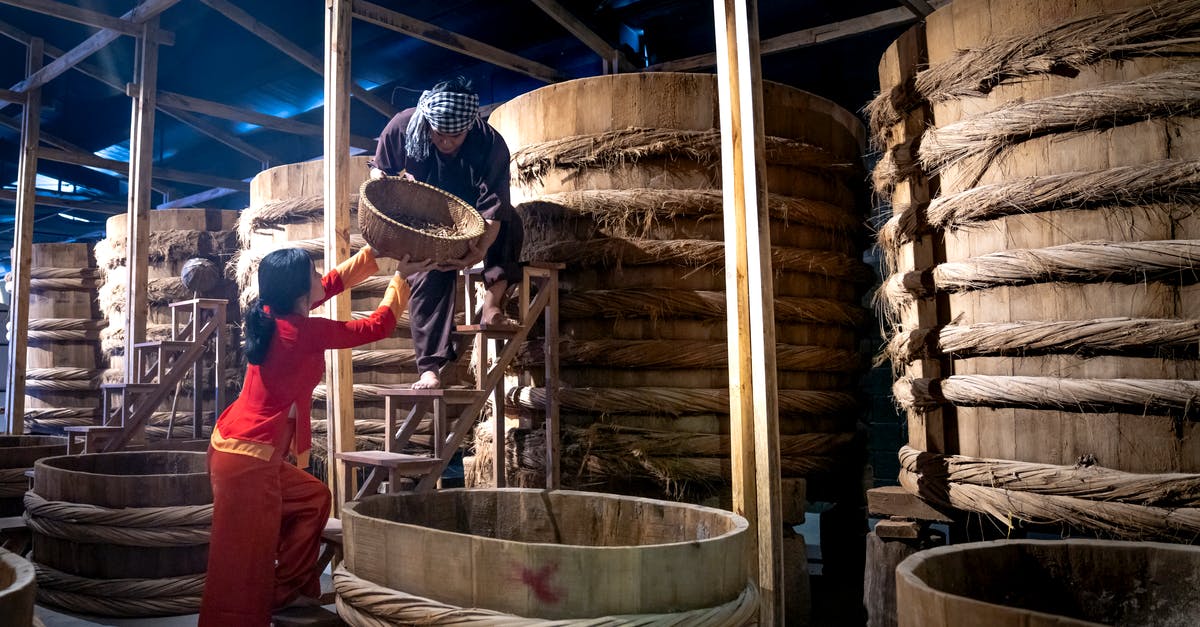How do I identify the fermentation process in a wild ferment?

TL;DR - How do I go about to identify the microbiological processes in a wild ferment?
Background
I have a recipe for rose hip wine based on wild (spontaneous) fermentation, that I got from a Swedish wine/beer makers forum. The recipe is simple (I've translated and summarized it a bit to make it fit better in the Q&A forum style). I've used the recipe above five times now with good results. The wine becomes very sweet and it has a quite low alcoholic content. It has a strong character of dried fruit and rose hips.
The recipe used
- Take 2.5 liters of rose hips. Pick off bad parts but don't clean them with water or desinfect them in any way - make sure the wild microbes are kept!
- Make a syrup of 3 liters (0.66 gal) water and 1.5 kg (2.2lbs) white sugar.
- Add rose hips and syrup to a big ceramic jar with a plate as a lid (optionally use a proper fermentation lock). Let ferment like this for 3-6 months.
- Strain and age on a carboy for 3 years. The taste is terrible initially, quite okay after 1 year, good after 2, excellent after 3.
This differ from most recipes online only on a few parts. (a) this is the only recipe with wild fermentation that I've found (b) the amount of water in other recipes is rather 7-10 liters for the same amount of hips and sugar (c) the first fermentation is 3-6 months instead of the typical 1-3 weeks seen in inocculated wine making (d) other recipes typically have some acid introduced in the beginning. lemons or lemon juince and possible lactic acid.
This is similar to other recipes online in the proportion of hips to sugar, and the recommendation to age 3 years is the same.
The current ferment
This year is the first that I use a fermentation lock. I altered the recipe slightly by admitting oxygen freely the first week, stirring occasionally to get the ferment going. After that, I put the lock on.
The fermentation is slow, but carbon dioxide is released continously. A bubble every minute or so, and has now been going so for 3 weeks. The specific gravity is still very high, so there is sugars in abundance. The smell from the bubbles is a little yeasty. The smell is also a little sour, but not at all like vinager. This is the typical smell this ferment makes!
I've read online that rose hips are high in malic acid, so I guess the long aging is for malolactic fermentation to take place.
The question
I would like to know what fermentation is currently going. Is it yeast or LAB? Could there be other carbon dioxide releasing processes of significance?
This very slow fermentation indicates to me that there might be not enough nutrition to sustain a larger yeast population. It would be nice to do some kind of before/after test if I would ad nutrition to see what effect that has.
I have pH measurements and gravity measurements currently. I consider getting other equipment for up ca $200, such as a microscope.
How does one go about to analyze the fermentation process at this hobby level?
Best Answer
In addition to @kitukwfyer's answer. There's quite a bit of biology that goes on here...
Not only are you influencing the competition, you are actively selecting for organisms that grow well under the conditions. This is the real reason brewing (and bread etc) works better with a starter culture. There are a few things influencing this:
- With a starter culture you are putting in a high number of organisms, which results in a shorter lag phase. Wild ferments rely on a relatively low abundance of naturally occurring organisms - so have a long lag.
- With a starter culture you are also adding organisms that are already at least semi-adapted to the type of culture, so they will grow better.
- It takes a while for the wild organisms that are there to actually adapt to the conditions. These are related to abundance of water, salt(s), nutrients, oxygen, CO2, pH etc; all of which may be on the boundaries of what is tolerable for the organisms that are there. Cultured organisms are at least partially selected for these characteristics already and selected against ones you don't want, indeed that is actually part of the reason people add things like acid to fermentations - it inhibits gut microflora like Escherichia coli that can make you quite ill.
- In the ferment you are selecting for strains that grow well under the conditions; this will be a small proportion of those that are there, so it results in a very small inoculum, and a long lag phase.
- Finally, wild organisms often have slow growth rates compared to cultured ones, because we generally want things quickly, so we select for strains that grow faster under the conditions we want - you probably did this subconsciously a couple of times already - you didn't see any signs of fermentation in a brew, so you threw it out and made a fresh batch; or something along those lines.
As to how you can identify the organisms - your best bet would be to get or make a bunch of bacterial (aim for lactic-acid fermentation ones here) and yeast plates (use some filter sterile fermentation broth as the liquid base if possible) and start streaking out your cultures. You most likely won't be able to culture all the organisms in your ferment, but you probably can culture those with the highest abundance (you already know they grow well under some conditions). You can then pick off individual colonies from our plates and grow them in liquid culture to see which have characteristics (flavour profiles) you like by themselves or in combination (try smelling them before drinking...). This is not a trivial task (list of techniques you might need) and relies on a bit of good sterile technique and a knowledge of what a "normal" organism looks like, not a contaminant from your own microflora.
Pictures about "How do I identify the fermentation process in a wild ferment?"



How do you determine fermentation?
The fermentation rate of the yeast can be calculated by measuring the volume of CO2 at the top of the tube and dividing it by the amount of time it took for that volume to form.What are types of wild fermentation?
Lactic acid fermentation (AKA: lacto-fermentation) is variant of wild fermentation. Lacto-fermentation refers to the specific bacteria, Lactobacillus. Lactobacillus is present on anything grown in the earth. So, sauerkraut is actually an example of both wild fermentation and lacto-fermentation.How long does wild fermentation take?
Ferment with an airlock for 2 weeks minimum. After 2 weeks, it's recommended to rack the wine into a clean gallon fermenter for another round of fermentation.What is natural fermentation process?
Fermentation is a natural process through which microorganisms like yeast and bacteria convert carbs \u2014 such as starch and sugar \u2014 into alcohol or acids. The alcohol or acids act as a natural preservative and give fermented foods a distinct zest and tartness.Identifying Yeast \u0026 Mold in Fermentation
More answers regarding how do I identify the fermentation process in a wild ferment?
Answer 2
I don't know nearly enough to answer properly, but I know a few things that might be interesting.
I can tell you that the initial ferment takes longer because of the decreased amount of water compared to other recipes. Microbes need water to live too after all. And in this batch you likely have more yeast than LAB... but you probably have both because LAB are everywhere.
The reason I say that the yeast are dominant is because you used an aerobic ferment for the first week, even stirring and introducing more oxygen. While LAB and yeast will both feed on the sugar, the yeast benefit most from the presence of oxygen. LAB don't care about oxygen. So you probably kickstarted the yeast this go around.
When we ferment, we always start with a full complement of microorganisms, and what we do with our recipes and fermentation setups is influence the competition. We create conditions that favor the bugs we want, kick off their population growth, and starve everything we don't want. Sometimes we use a starter culture, but we also manipulate temperature, oxygen, and salinity to get different results. But some things are always beyond our control. Sourdough can be made and maintained in the exact same way but still develop differently simply due to geographic location. It's the nature of the beast.
Unfortunately, that's most of what I can tell you. I don't work with alcoholic ferments, and largely stick to LAB and vinegar. However, if you want to try and learn through hands-on hobbyism, there's no limit to the experimentation you can perform.
While fermentation is definitely a science, and lab-testing would give you the most precise measurements and data, fermentation is also an ancient folk art kind of deal, with tons of history. (Looking into the history really doesn't seem to be what you're interested in, but it is cool.)
I've learned most of what I know through experimentation, subbing out ingredients in my kimchi and using different tea in my kombucha and keeping track of my house's ambient temperature during fermentation for example.
I can't make any equipment recommendations because I don't have access to any, but I would recommend a notebook or creating a folder on your computer where you can take notes on what you're doing differently with every recipe. Keep an observation log and measure anything that interests you at set intervals: the pH and specific gravity for two, and also consider recording the temperature and the weather. Making side-by-side batches is fun, but even if you make one at a time, if you keep records you can look at the records side-by-side later and look for patterns and differences in the outcome. Review the scientific method and make a "control" batch that you can compare later experiments to, without worrying about memory fog.
Beyond observation and analysis skill development, the only thing I can think of is to consider how labs historically test for cultures. You can look into the microscope idea, but also research culturing whatever lives in your wine along the way. I think there are different agar-based jelly plates that will encourage the growth of different bugs in an incubator? My dad was a pathologist, but I have no idea how to apply anything I saw growing up to fermentation analysis unfortunately.
Sources: Stack Exchange - This article follows the attribution requirements of Stack Exchange and is licensed under CC BY-SA 3.0.
Images: Quang Nguyen Vinh, Quang Nguyen Vinh, Quang Nguyen Vinh, Quang Nguyen Vinh
